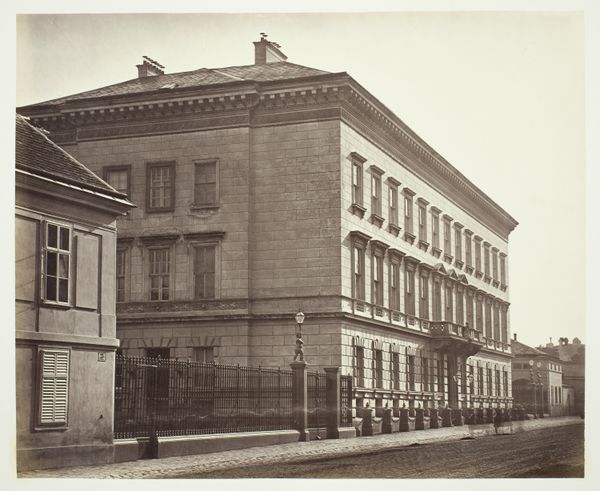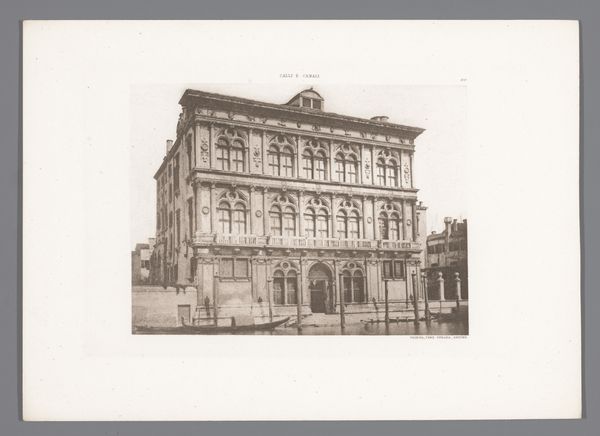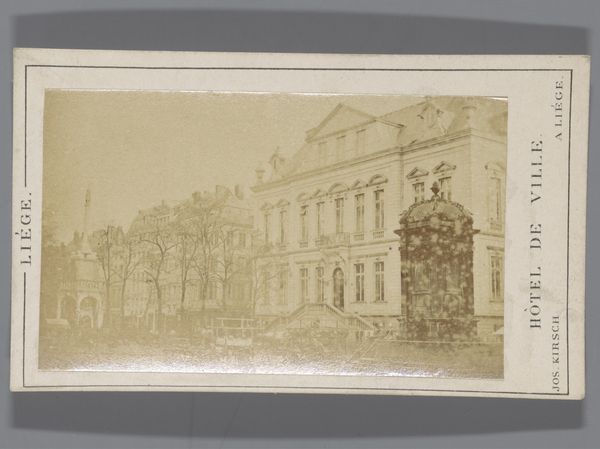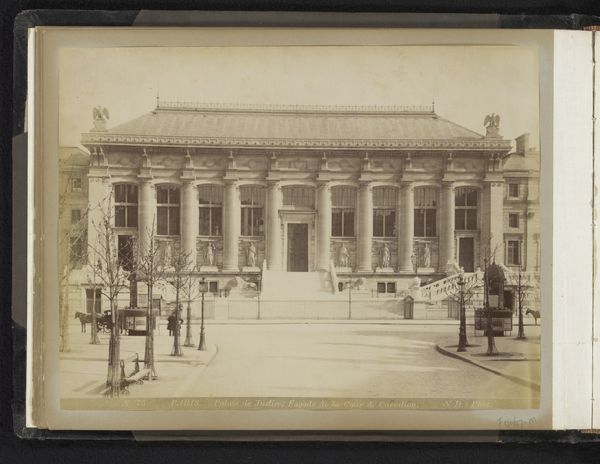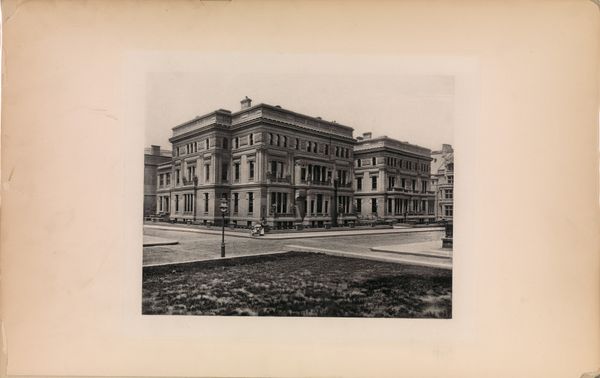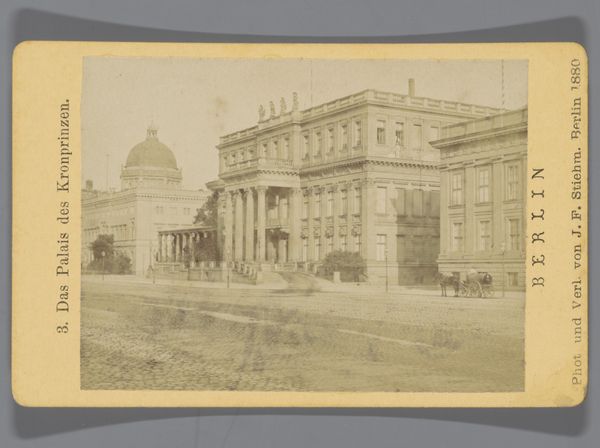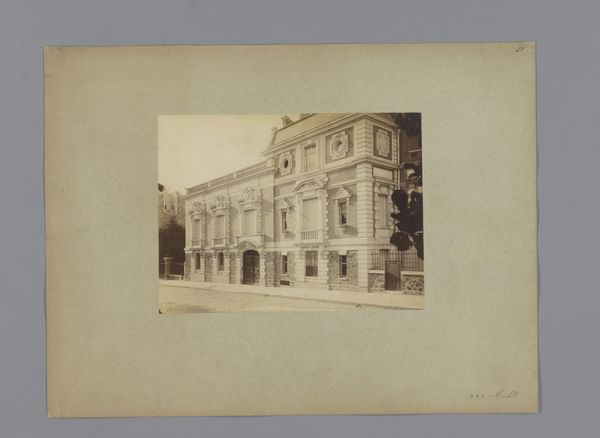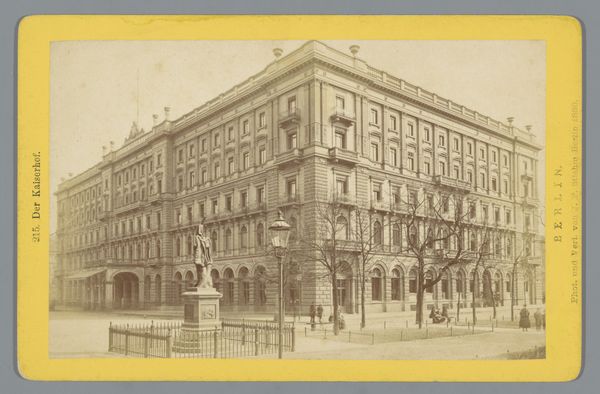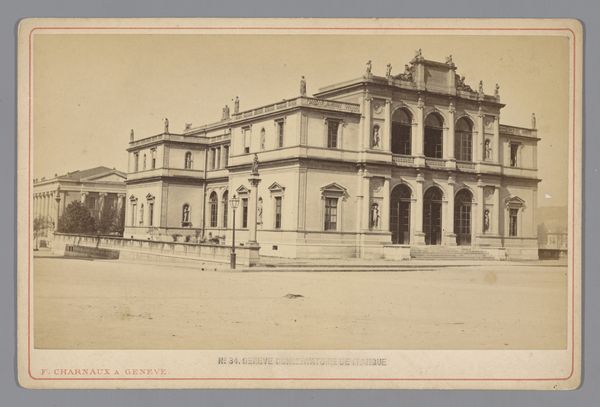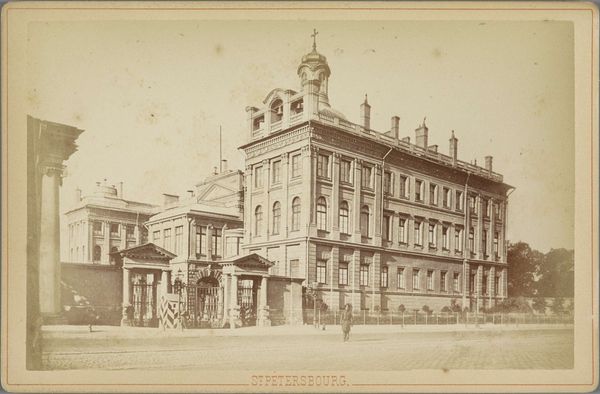
Dimensions: height 67 mm, width 106 mm
Copyright: Rijks Museum: Open Domain
Curator: What strikes me immediately is the palpable sense of order—the symmetrical facade, the repetitive window patterns—it speaks of rigid social structures in 1880 Berlin. Editor: Agreed. But what draws me in is the physical presence, the palpable weight of the Kaiser’s Old Palace. Stiehm captured this albumen print around 1880, showing the meticulous neoclassical construction. One really grasps how meticulously each column, each cornice was fabricated. Curator: Right, and consider how the Neoclassical style, prevalent in the design of this palace, sought to legitimize power through associations with the Roman Empire, an appeal to historical authority and the power structures of that time, reflecting the era’s identity. Editor: Absolutely. Think about the social process inherent in creating such a building, the labour and industry. Who quarried and transported that stone? Who designed those windows? The Kaiser's image is fabricated on the backs of anonymous hands. Curator: Exactly, the Kaiser’s authority and wealth enabled this vast display. Moreover, the very act of photographing it – and then disseminating these images – further cements the building and the values that it embodied within the broader consciousness. This is also about visibility, who is seen, and the unequal gaze directed at them. Editor: I see your point. Also, given that it's a site-specific albumen print, each print is made individually using chemical processes dependent on site conditions, making each a subtly unique record of that moment and place. Curator: In a sense, you’re right—it’s an individualized document reflecting the era. Thinking about those who would have walked along Unter den Linden at the time, for whom this photograph held different meanings—from pride in their nation to a sharp reminder of societal stratification. It serves as a fascinating point for social commentary, for how it reflected the status quo. Editor: And thinking about its materiality today as well! Its transformation into a tourist postcard: it shows the way these historical places are integrated into commodified representations. Food for thought. Curator: Indeed! It’s important to examine those historical threads to understand contemporary power structures. Editor: Right. Focusing on those tangible links helps anchor and extend that examination in really productive ways.
Comments
No comments
Be the first to comment and join the conversation on the ultimate creative platform.


